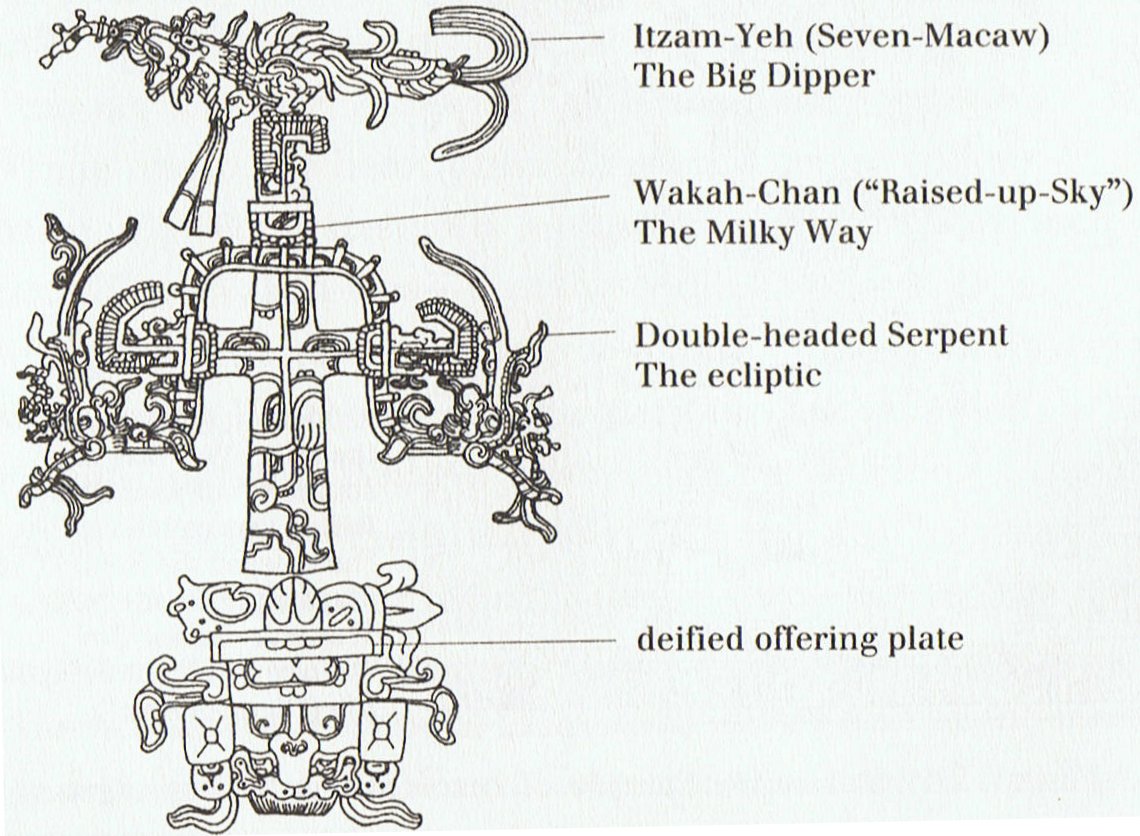I am taking Metoro's words as a partial 'proof' of my ideas:
The pair of niu glyphs could represent a balanced pair of extreme positions on each side of the sky, one in spring and one in autumn, like Aldebaran and Antares. The Milky Way (Goe) stretches across from one end to the other. If regarded as a horizontal (moe) connnection, then it would be much like a water surface, the surface of a River. Cb2-8 could illustrate spring, with 7 'feather marks' ahead for the coming summer, while Cb2-9 would be its opposite. The top pair of niu 'branches' in Cb2-9 are not dry. Summer is dry, but winter is not. As we should remember, the Loon was calling out because the Gods had nowhere to stay. There was no house ('mansion') for them in the 'sea': ... In the morning of the world, there was nothing but water. The Loon was calling, and the old man who at that time bore the Raven's name, Nangkilstlas, asked her why. 'The gods are homeless', the Loon replied. 'I'll see to it', said the old man, without moving from the fire in his house on the floor of the sea ... 'Land' had not yet been reached and 'fire' had to be kept at the very bottom - as far away from 'water' as possible - where there was a sacrificial 'oven':
The horizontal beam of this Mayan World Tree corresponds to the ecliptic path of Sun and possibly also to a Serpent with one head in each direction. It is similar to the Olmec conception of the King as World Tree carrying a Serpent. But this one has only one head and the projection is different. The 'fire' is in the centre of the quincunx pattern:
In rongorongo times there was no solstice in May. Instead the Tree of the King should stand up. The stars were surely defined much earlier, when possibly for instance Zaurak ('the Boat', γ Eridani) at a low point high up in the river bend (and ahead of the left front paw of Cetus) could have been imagined to be close to the winter solstice:
But Menkar (α Ceti), at the nose of the Sea Beast, rose 14 days earlier, when the River Bank had been reached:
Manzil day 354 (= 12 * 29½) came earlier than the time when the Pleiades rose heliacally, and Zaurak rose 3 days after Tau-ono. | |||||||||||||||||||||||||||||||||||||||||||||||||||||||||||||||||||||||||||||||||||||||||





